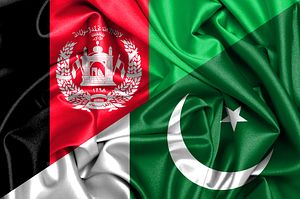A few defense and security related stories you may have missed:
We’ve seen this movie before. Leaving 2015 behind them, the heads of the spy agencies of Afghanistan and Pakistan met on Thursday for bilateral talks. The talks concerned “building mutual trust for effective intelligence sharing.” The context of what occurred last year is important. Afghanistan’s National Directorate of Security (NDS) and Pakistan’s Inter-Services Intelligence Directorate (ISI) attempted something similar, but the arrangement effectively fell apart in the late summer — Ashraf Ghani, Afghanistan’s president, eventually went on a tirade against the Pakistanis for allegedly supporting terrorists inside Afghanistan. It’s unclear if the current round of rapprochement will try to address the mistrust that reemerged late last year, but, with nascent peace talks and the recent terror attack in Charsadda, Pakistan still fresh, both sides seem willing to give talks a shot.
Carrier cooperation between the United States and India? Over at the National Interest, Harry Kazianis digs into prospects for aircraft carrier cooperation between the United States and India. He asks “Would America also be willing to sell to its new South Asian partner the carrier-based version of the F-35?” I’m not so sure about that, but you may also be interested in my recent take on news that Boeing may be entering talks with the Indian government over the F/A-18 Super Hornet. (I’m also not too sure about the viability of that approach.)
Thailand eyes a new OPV. The Royal Thai Navy and BAE Systems have just signed a contract for a new offshore patrol vessel (OPV). The OPV will be Thailand’s second and will be license-built in Thailand. According to a BAE news release, the OPV will be designed for “management of economic exclusive zones and the provision of effective disaster relief.” “Good sea-keeping, speed and fuel economy have been improved further by the lengthened hull of the 90-meter variant,” it added.
Island chains and the Asia-Pacific’s strategy geography. Andrew Erickson and Joel Wuthnow explain the enduring significance of the western Pacific’s “island chains.” You may see references to the first and second island chains in writing here at The Diplomat, but the history and background of just why the island chains are relevant in Asia is fascinating. China, naturally, thinks quite a bit about these geographic constants, given their potential to serve its adversaries during wartime, but other powers, including the United States and Japan, are acutely aware of them as well. Going forward, Erickson and Wuthnow write that “Chinese strategists will increasingly focus on perceived vulnerabilities of U.S. and allied forces along the island chains, while the latter will consider how forces can be dispersed and hardened so as to deter Chinese aggression.”
What to expect in the South China Sea. In case you missed it, on the latest podcast, Prashanth Parameswaran and I talk over the recent U.S. Navy freedom of navigation operation in the Paracel Islands, situating the operation in the context of U.S.-China relations and the South China Sea disputes more broadly.

































